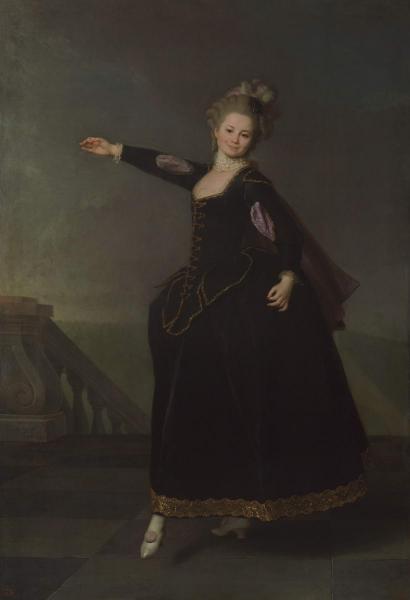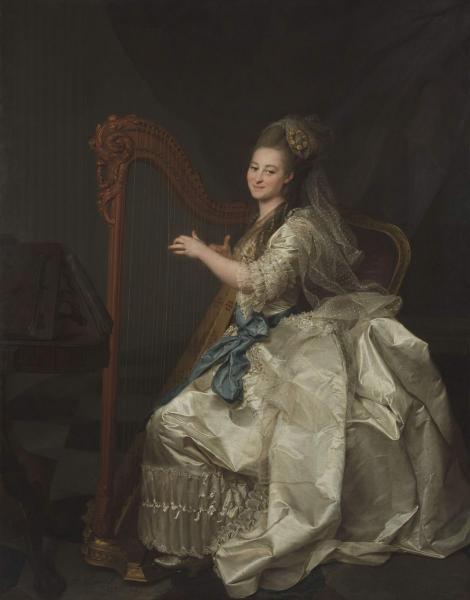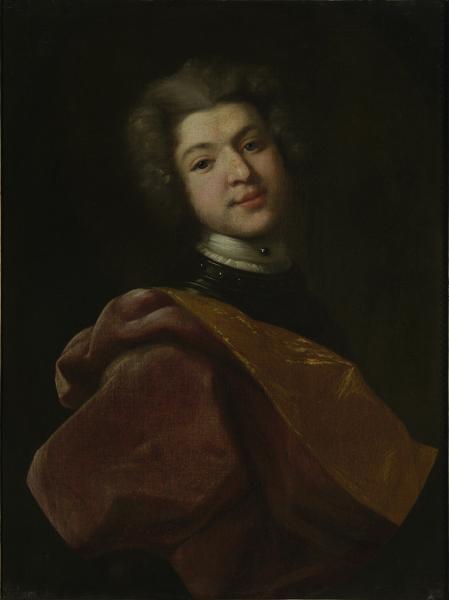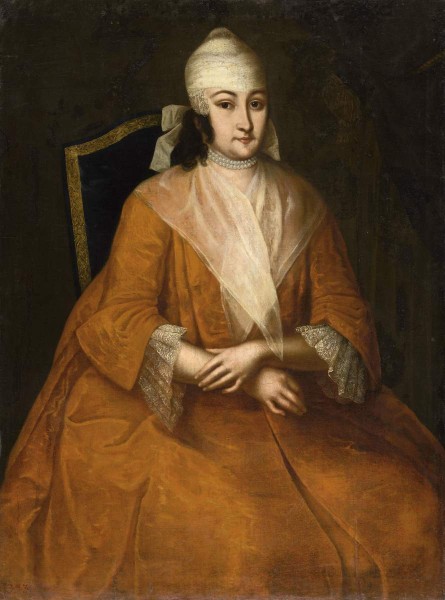The artist is Levitsky

In the seventies of the XVIII century, by order of Catherine II, Levitsky wrote a series "Smolinki", consisting of seven portraits of pupils of the Smolny Institute of noble girls – a privileged educational institution opened in St. Petersburg in 1764 by decree of the empress. Daughters of the nobles were prepared there for court service and social life. Talents brought up in girls, "Nice in society", – They were taught French and German, elegant manners, as well as sing, dance, play musical instruments. The Smolny Institute often arranged ideas where the Smolians played French comedies, and also performed in the ballet.
Borscheva (Barshcheva) Natalya Semenovna (1758-1843) – daughter of a retired Fourier from. And. Borschev. From 1764 to 1776 she studied in the educational society of noble girls, which she graduated from a large gold medal and cipher of Catherine II. In 1776 she became the maid of honor of Grand Duchess Maria Fedorovna. Married first marriage for. With. Musin-Pushkin, the second-for Major General von der Hovene.
It is depicted in a ballroom dress, in which she danced at a ball in the educational society of noble girls.
About the restoration of a series of paintings d. Levitsky "Smolinki" On the website of the Restoration Service of Museum Values
+ About the restoration of the work
– Hide the text about restoration
The state of safety before restoration:
Numerous records of the author’s colorful layer were located over the entire surface. The study of the visible luminescence of painting in UV rays revealed the presence of tones of different times lying under different varnish layers, applied to a greater extent on the “oil ruptures”.
The image of the dress over time appeared almost completely rewritten using other black pigments than that.G. Levitsky. Levitsky used black asphalt with an admixture of soot in writing a Borshchova dress. None of the well -known black pigments gives such a depth. However, the asphalt black due to colossal oil intensity leads to a disease expressed precisely in the appearance and constant growth of “oil ruptures”. If you imagine a grid of breaks of non -pushed, with a translucent red Impire, then the color of the dress and the nature of the depicted fabric will completely change.
Portrait n.With. Borshchova, as well as other portraits of Smolyanok, was transferred to a new canvas at the end of the 19th century. After more than 120 years, the picture required comprehensive conservation and clearance of author’s painting from numerous layers of changed varnishes and records.
Complex of the events:
After the strengthening of the colorful layer and duplication of the edges along the perimeter of the translated canvas, the picture was again stretched over the subframe. The regeneration of varnishes and a colorful layer made it possible to conduct a delicate post -layer removal of late varnish layers and records. In the process of clearing, copyright techniques for writing the folds of the dress were revealed, where on the game of warm and deep black asphalt and muffled cold soot nuances of volume and materiality were built. It was decided to tint the oil gaps on the image of the dress, since the red -haired imprinters violated the unity of the picturesque image too much. The black dress “came to life” thanks to the folds of the “velvety” soft halftones depicted from under the deaf records and the subtleties depicted from the author. After removing the dark filter of varnishes, thanks to the manifested cold tones, the space around the dancing figure sounded.
Keeping a story. Restoration workshop of the Russian Museum – 100 years. SPb, 2022. With. 87.
Programs/Films about this work in the media text:

D.G.Levitsky. By the 275th birthday
Creation year: 2010 | Video painting | Language: | Duration: 25:47
Dmitry Grigorievich Levitsky – one of the best portraitists in Russian history of painting. In this film, the director of the Russian Museum in.AND.Gusev talks about the work of the master and the history of his work on the series of portraits of the pupils of the Smolny Institute of noble girls.

Dmitry Levitsky. “Smolinki”. Restoration of portraits
Creation year: 2010 | Interactive program | Language:
The multimedia program was released for an exhibition dedicated to the 275th anniversary of the birth of Dmitry Grigoryevich Levitsky in the Russian Museum. The program talks about the restoration of the famous “Smolyans” – seven portraits of pupils of the educational society of noble girls at the Smolny Institute.


